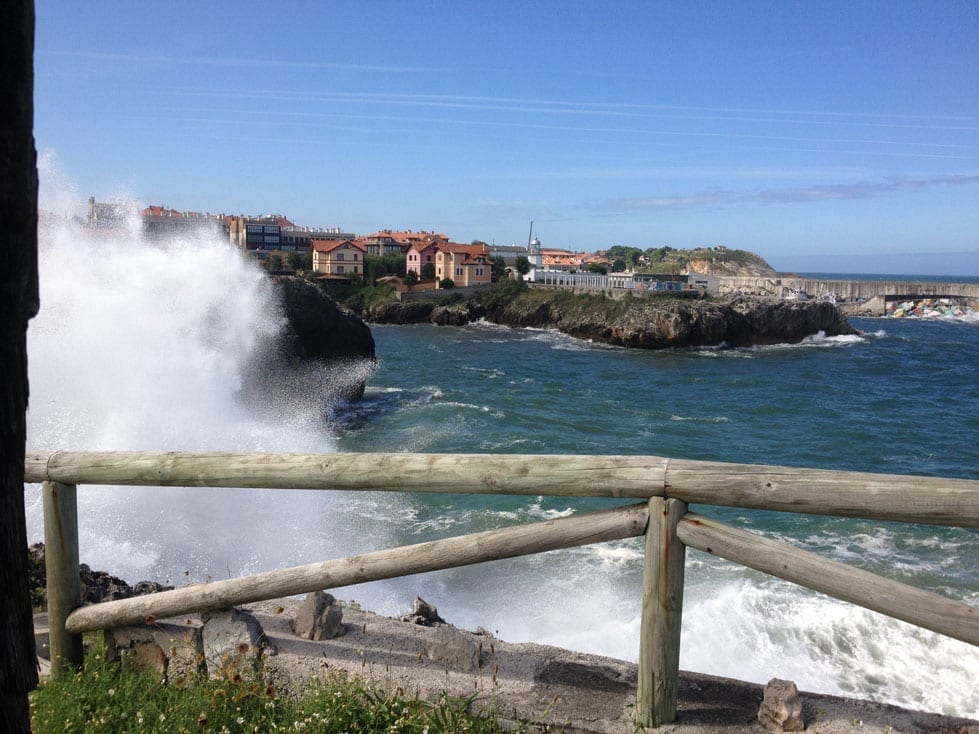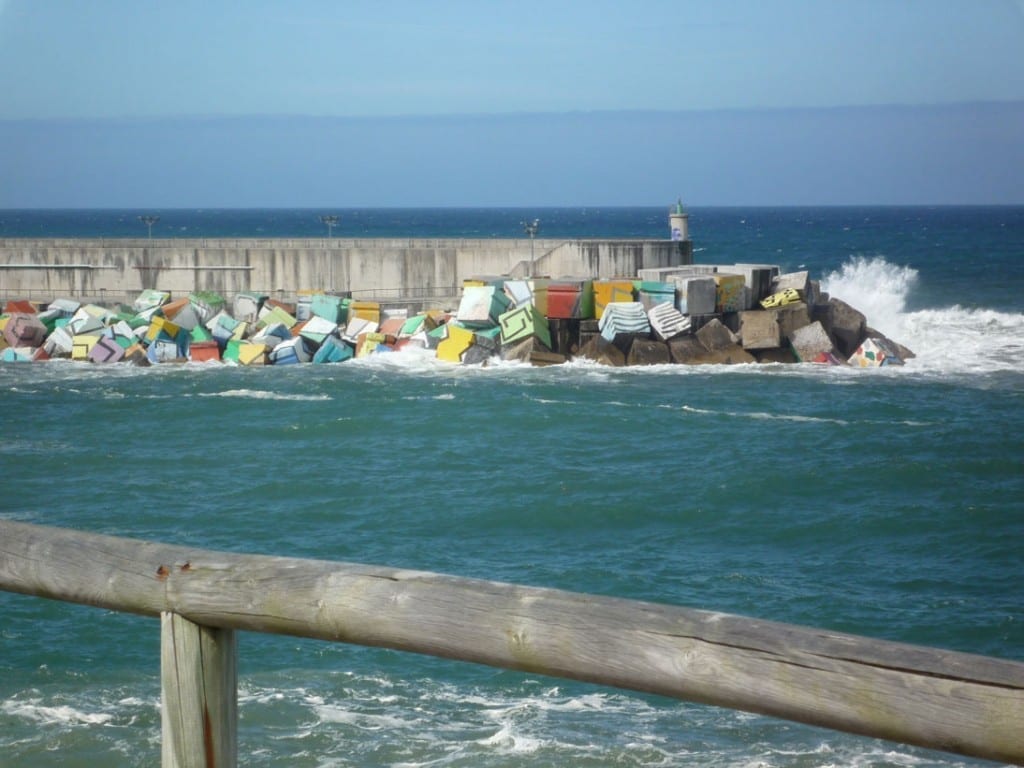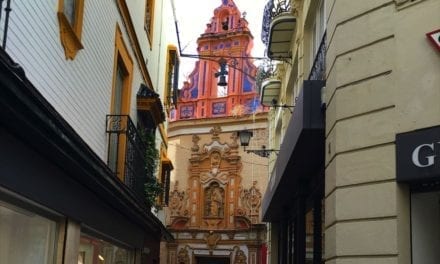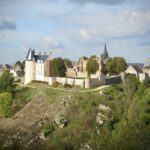Llanes,
Our next stop in Llanes was going to be at a free camper-stop from our book but when we arrived we found that the information in the book was out of date and the car park had height barriers so we were unable to get in. Disappointed we drove up the hill a little way and noticed a campsite to our right on the cliffs. We drove on and were so happy with the position of the site and the beautiful views that we stayed for 3 nights. Although the nightly fee was a bit more than we normally like to pay 20 euros a night we felt it was worth it for the lovely views.
We were going to hook up to the electric which would have cost another 3 euros a night but, we think the amps must have been a bit low maybe only 3 amps as we couldn’t get it to work. It took Ray ages to work out that it wasn’t our van and that it was their supply though – Oh well we can manage ok without electric as everything works from the leisure battery. The only problem would have been if I’d wanted to use my hairdryer or hair straighteners as I need electricity for those.
Again we were mesmerized by the views as we sat outside the van watching the waves crashing on the natural spiky rock formations and causing a fine spray. Going to sleep at night and waking in the morning to the sound of the waves was heaven.
Strewn alongside the far end of the pier like a set of children’s blocks are the ‘cubes of memory’, painted by Agustin Ibarrola. They are large reinforced cubes that act as a breakwater and protect the harbour from fierce winter storms. Some are painted with apples and citrus fruits which were the main agricultural and export products in the nineteenth century.
That first day we arrived we didn’t want to move from the fantastic view and as it was 3pm anyway we decided to stay outside the van drinking in the view, relaxing and relaxing in the warm sun.
Next morning we felt more energised to walk into Llanes and was expecting a much longer walk but it was only about 10 minutes at most. Llanes with its bustling harbour is Northern Spain’s more popular holiday destination with the Los Picos de Europa National Park close by. The park is the biggest national park in Europe. The mountain peaks are very high and create a beautiful landscape. The park is mainly made up of valleys, high mountains and gorges. Of course, visiting Llanes at this time of year is so nice as the summer crowds have gone and although some tourists around as well as the locals it was relatively quiet and relaxing.
We had a lovely meal in one of the restaurants on a side street. It was three courses, although for the first course (we both chose paella) would have been enough for me as it was such a large portion. Ray then had veal covered with a tangy cabralen cheese and I had a mushroom crepe, we both had Bruleee to follow all washed down with a bottle of wine for 20 euros for the two of us.
Camping Entre Playas
Cipriano Brava Noriego
Principado de Asturias
Llanes Tel 985 400 888
N43.41605 W4.7451 (Playa de Toro, Camperstop now closed but Camping Entre Playas 200 yards away).
Click the photos for larger images

Llanes, Northern Spain

Buildings in Llanes
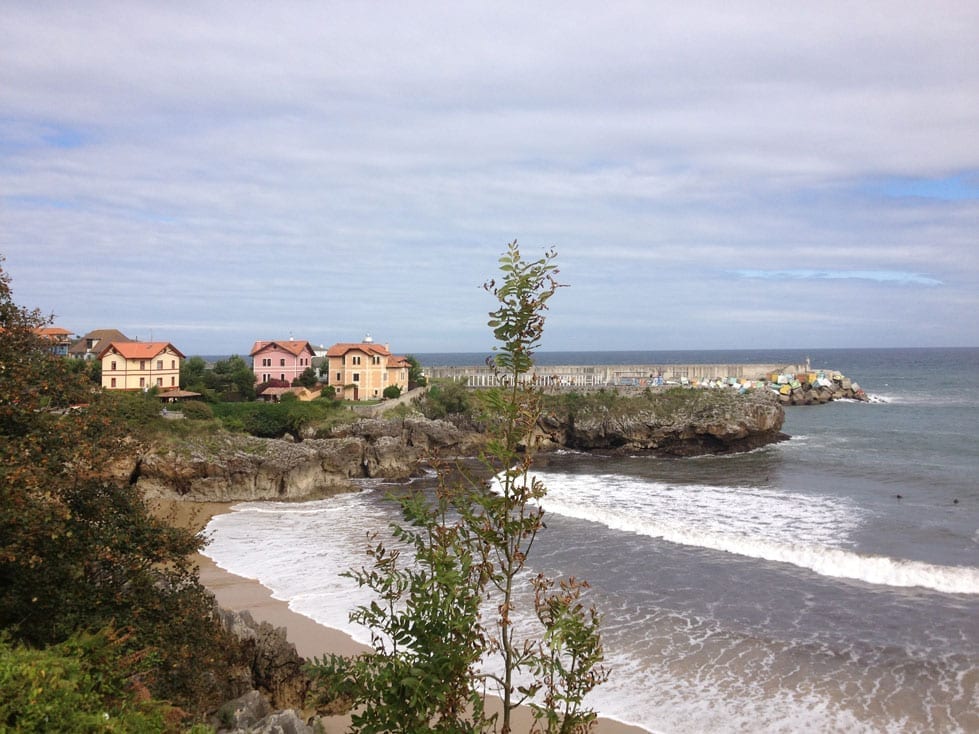
Llanes view from the motorhome

Llanes, Northern Spain

View of our motorhome on the cliffs at Llanes
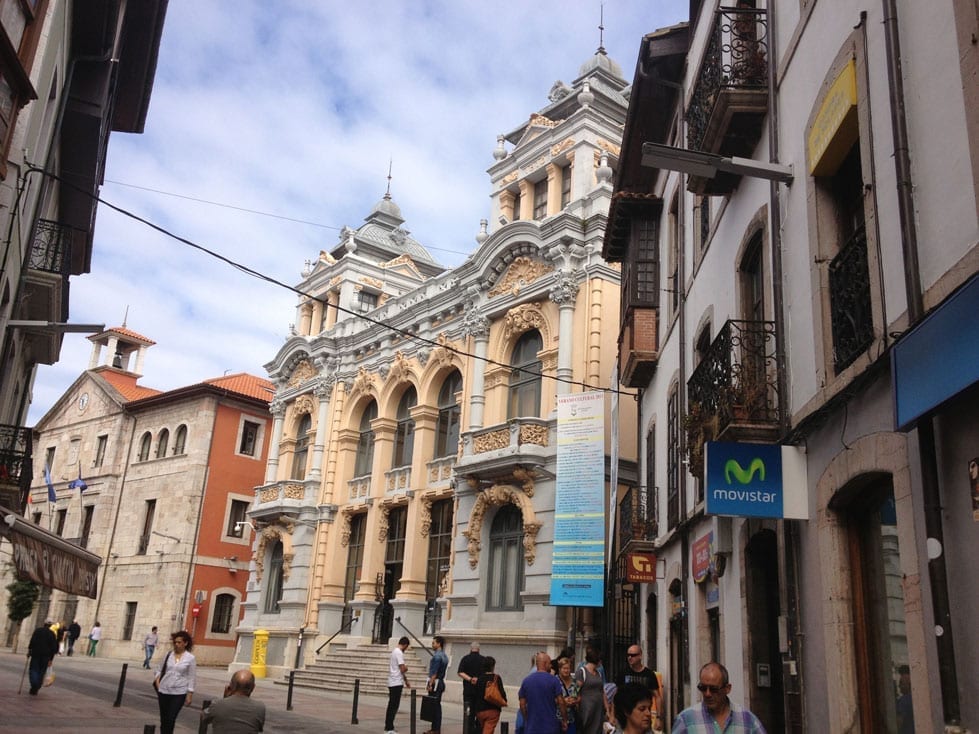
Llanes, Northern Spain
From Llanes, we travelled onto Colunga which was a village before Lastres. I particularly wanted to visit Lastres which is a little fishing village in the Asturias region as it is the location for the Spanish version of the TV series of Doc Martin. In Spain, it’s called Doctor Mateo. As with Port Issac which is called Portwern in the series Lastres is called San Martin Del Sella.
We visited Port Issac a few years ago and had a photo taken outside Doc Martins house and so wanted to see how similar the town might be for the Spanish version. Apparently, it has cobbled lanes flanked by houses with brightly painted balustrades and pots of geraniums on the window sills. The beaches and coastline are quite similar to Cornwall.
Unfortunately, we could only get so far then could go no further with our motorhome as the roads were too narrow and there was no parking outside the town itself, unlike Port Issac. The walk along the road was about 2 kms which isn’t far but there was no pavement to walk along. We were told we could walk over the rocks but they could be a bit slippery. There was a bus we could take from the top of the road and we could have stayed overnight at the campsite in Colunga but as we had only travelled an hour down the road from Llanes we felt we wanted to travel on a bit further before stopping for the night. – Maybe another place to come back to next time.
We carried on hugging the coastline through San Vincente de la Barquera (a pretty historic fishing village that has many medieval buildings, good restaurants which are situated around the beach and port).
Northern Spain is a much gentler-paced rural way of life to the crowds of Benidorm and Torremolinos. The coast from the French border in the east to the frontier with Northern Portugal in the west covers a distance of 500 miles and includes some of the country’s most historic places Galicia, Cantabria and Asturias regions. We have decided to cut one corner out and travel down from Tapia de Casariego to Muros which is just before Santiago de Compostela, therefore, cutting out a lot of the Galicia region this time. It gives us something to come back for next time.

